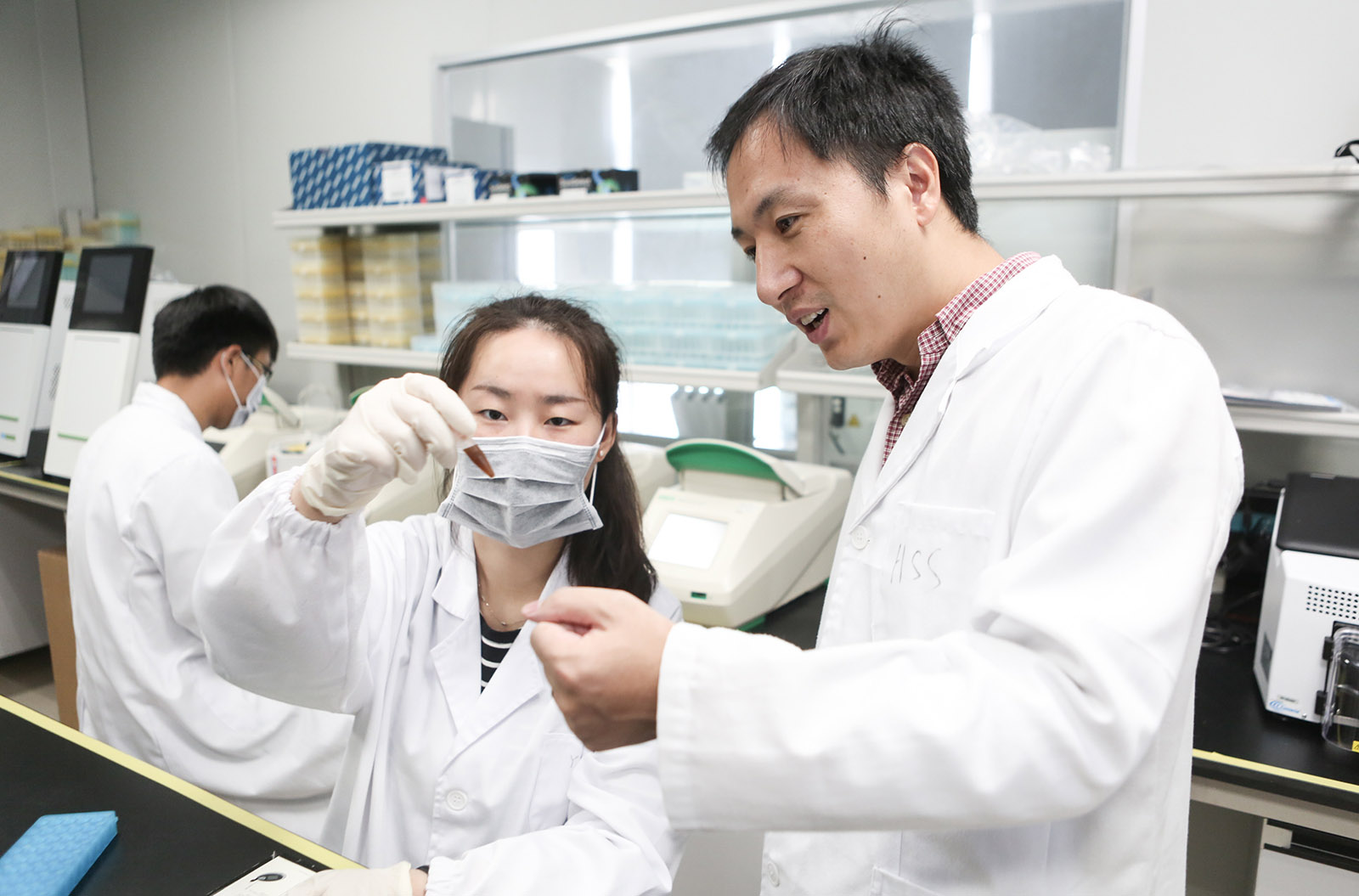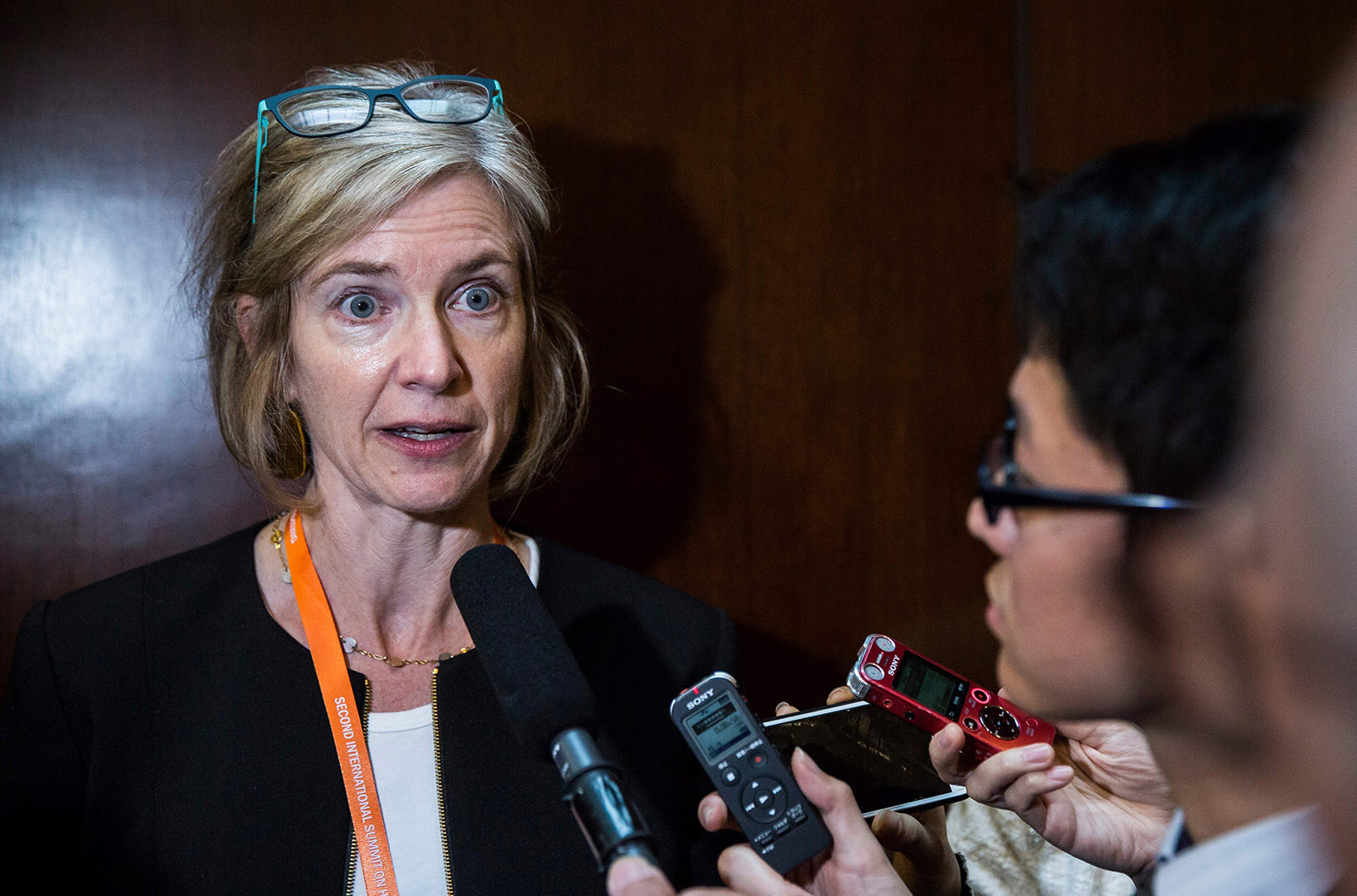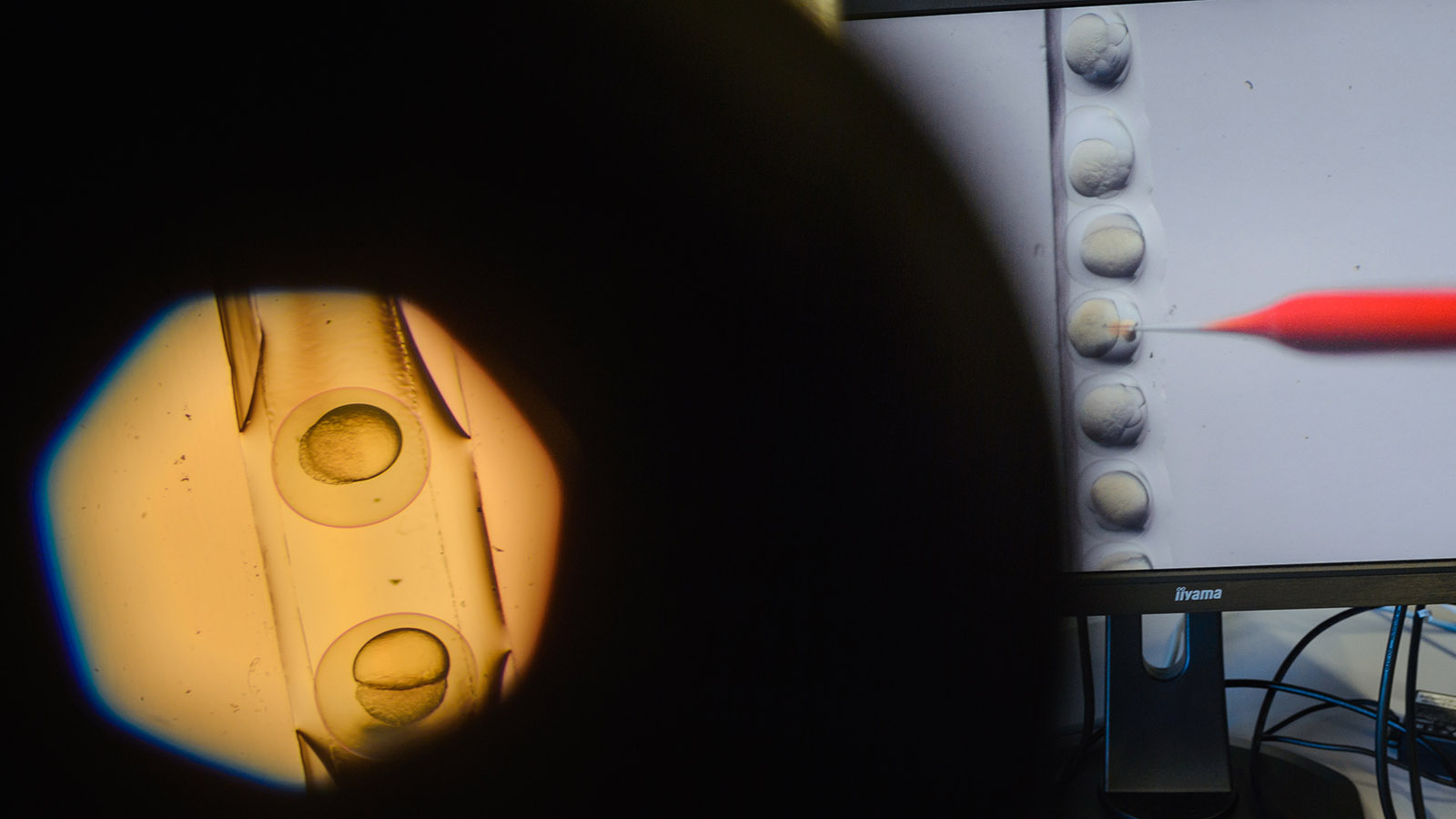When the journal Science chose the radical gene-editing technology CRISPR as its 2015 breakthrough of the year, the editorial team closed its description on a dire note. “For better or worse, we all now live in CRISPR’s world,” they wrote. Emerging into the public consciousness in 2013, CRISPR has been with us only as long as it takes to complete secondary school, but like the information technologies that rose alongside it, it is often described as if it is beyond regulation and direction, as if it had acquired its own uncompromising telos.
CRISPR works by repurposing parts of an ancient bacterial immune system to make the job of editing genes in almost any organism unprecedentedly simple and accurate. So simple, in fact, that unlike other scientific advancements that are perpetually just around the corner, CRISPR entered widespread use almost immediately. Gene-edited mice and zebrafish, classic laboratory models, rapidly gave way to edits in the genomes of livestock such as pigs and cows. Chinese scientists have been running human gene-editing trials since 2016, and the first stateside trials for CRISPR in adult humans began just last year, aimed at treating cancer and blood disorders like sickle-cell anemia.
If CRISPR has an agreed-upon red line, it is human germline editing (which, in effect, entails editing human embryos to create babies that will carry the edits in all of their cells, and will pass the changes on to any offspring they have). That line was crossed in November at the Second International Summit on Human Genome Editing in Hong Kong, when a relatively unknown Chinese scientist named He Jiankui announced that he had introduced genetic changes in at least two human embryos that were carried to term, meaning that the first two gene-edited humans in history—twins, as it happens—exist somewhere in China.
A rogue scientist with a grand claim is nothing new, and China has often loomed in the scientific imagination as a threatening, lawless fringe sheltering bad actors. When the South Korean government shut down Woo Suk Hwang’s work, which claimed to be extracting stem cells from altered human embryos, a process known as therapeutic cloning, in 2004, he threatened to go to China, where it was not illegal to genetically edit human embryos; and a recent Wall Street Journal article described genetic research in China racing ahead, “unhampered by rules”. By any standard, though, He’s case is strange, more closely resembling a cold war-era drama than a development in the globalized, hyper-connected sphere of modern science.
After his announcement, He appeared at the summit to present his work. This was the last time he made a public statement; since then, he has virtually vanished within China. He has been fired from his university, and the government has banned continuation of his research, claiming he falsified ethics approval. China is not, of course, actually lawless. Whatever is known about his situation comes via the government, or in secondhand fragments through journalists or scientists with whom he has sporadic contact, and rumors have been flying. Pictures were shared showing him under guard in a guesthouse on the campus of his university in Shenzhen, and there is speculation about his confinement. Just after Christmas, it was reported—erroneously, it turned out—that he might be facing the death penalty.
His research data, in a paper he promised at the conference, has yet to be released—leaving the world’s leading scientists little the wiser since his original revelation. Access to He’s data, and to the gene-edited children, would allow scientists to gauge how successful the edits were, and perhaps to evaluate whether they could malfunction in the future. But the wait and the mystery of He’s fate have been a distraction from the far greater and more consequential question of what to do about human germline editing.
There is still no clear answer from scientists. There has been a failure over the last decade of any center of power within the scientific community to develop a coherent moral and logistical framework for the future regulation of the technology. The situation practically guarantees that research will creep ever closer to the red line of human genome editing until inertia finally carries it over.
At first glance, this seems improbable. He’s announcement was met with universal condemnation. Hundreds of Chinese scientists signed a letter calling the research “crazy,” CRISPR’s co-creator, Jennifer Doudna, said she was “horrified,” and Francis Collins, the director of the National Institutes for Health, labeled it “profoundly disturbing.” Interjections on He’s behalf, such as one from Harvard’s George Church, whom many regard as a provocateur, accusing other scientists of “bullying” He, and excusing him for failing only to “do the paperwork right,” were rare outliers.
Advertisement
But if everyone can agree He crossed some kind of line, the questions of what that line is and where it should be are still open. The heads of the US National Academy of Sciences, the National Academy of Medicine, and the Chinese Academy of Sciences released a joint statement in December condemning He’s actions, but warned that CRISPR had “outpaced” efforts to confront its ethical and governance questions, and called for international co-operation to determine specific criteria and standards to be met before germline editing is permitted. George Daley, the head of Harvard Medical School, said that rather than “stick our heads in the sand” we should “start outlining what an actual pathway for clinical translation would be.”
The trouble is, these statements suggest scientific consensus is clustered around accepting the inevitable: that widespread germline editing will happen, and relatively soon. This obscures how divided scientists and the wider public are on the issue. Many scientists, including Feng Zhang, the researcher who originally adapted the technology to human cells, favor a temporary outright ban on CRISPR babies. The influential University of California biologist Paul Knoepfler, who also supports a moratorium, wrote that institutions and congress organizers had sent mixed messages, condemning He even as they seemed to recommend forging ahead with the technology.
In the journal Nature, the Arizona State University ethicist J. Benjamin Hurlbut wrote that “[national academies] are saying, in effect, that He’s experiment was problematic not because of what he did, but because of how he did it,” and that the fundamental question of whether gene-editing in humans should occur at all has been “shunted aside.” This, coupled with the recent revelation that several American researchers, including 2006 Nobel Laureate Craig Mello, were in contact with He and aware of his work without raising concerns in public, has led to the feeling that an influential faction of scientists either supports human germline editing or is simply resigned to the unrelenting forward motion of the technology.
*
Broadly speaking, there are two kinds of cells in the human body. The somatic cells are the vast majority, forming every familiar structure: your skin, blood, muscle, and organs. Somatic cells make up the body, and they die with it, there is no hope of creating a new organism with them. The other type, called germ cells, are sequestered away early in development; they divide more slowly and under more restricted circumstances. These cells cannot become a finger or a liver, but they do make the only bits of us that can form a new person: the eggs and the sperm. Every cell in your body holds the DNA of an unbroken lineage stretching back millions of years and thousands of generations, but only the germline has a chance to go forward.
Human trials with CRISPR have thus far been limited to somatic cells. In effect, this renders CRISPR no more consequential than any other experimental drug or treatment—that is to say, limited by the body that holds it. Any CRISPR-made changes to a person’s somatic cells cannot be passed on to their progeny. They are a genetic dead-end. Germline cells, however, have the possibility of immortality, with the potential to affect thousands of people over the course of several generations. Tinkering with germline cells is therefore a much more serious proposition.
All of this has been apparent from the moment it became clear CRISPR could be used to edit human DNA. Initially, most scientists reserved judgement until more research could be done. In 2015, a joint report from the US National Academies of Sciences, Engineering, and Medicine (NASEM), the Chinese Academy of Sciences, and the UK’s Royal Society concluded that human germline editing would be “irresponsible” until more was known about the risks and benefits, and a “broad societal consensus” could be reached.
Since then, scientific opinion hasn’t shifted so much as drifted. It has never coalesced into an explicit position endorsed by a large number of institutions, such as the near-total international agreement that human cloning should stay off-limits, but has instead splintered into a broad spectrum of imprecise statements. In such a vacuum of indecision, the tendency is toward permissiveness. In a recent paper, the Yale University physician and ethicist Carolyn Brokowski reviewed some sixty statements on human gene-editing from scientific organizations around the world and found that they ranged from prohibition to a tacit endorsement so long as the medical risks were understood. This forward position was staked out by NASEM in a 2017 report, a bold leap from its cautious 2015 stance. The academies’ position has since been reinforced with a review by the UK’s influential Nuffield Council on Bioethics, as well as by the report from the national academies following the He affair.
Advertisement
The German Ethics Council, a body that advises the German government, identified this drift in 2017, writing that there was a prominent US-led shift in focus from “risk-related strong rejection” to “fundamental permission,” as long as technical criteria were satisfied—in short, ethical considerations had been sidelined in favor of narrowly defined safety standards. And as numerous scientists and ethicists have pointed out, the need for “broad public acceptance” seems to have disappeared from recent statements.
The modern scientific community is structured to behave this way in part because science has become more international and less centralized under the oversight of relatively few national institutions over time. It also reflects what Harvard University historian of science Sheila Jasanoff has described as the slow retreat of the state from the “obligation to keep innovation within safe bounds” and the decline of democratic guardianship of science in favor of self-regulation.
This can be seen in what the University of Wisconsin bioethicist Alta Charo, an author of the 2017 NASEM report, both observes and endorses as the “yellow light” approach to regulating “technology [that] innovates faster than the regulatory system can adapt.” Notwithstanding careful, constant monitoring, the presumption of the “yellow light” approach is always to allow the science to move slightly ahead of the rules. Charo notes that most genetic technology research already progresses this way, with policy following guidelines developed by scientists themselves.
This all sounds intuitively appealing—seeming to offer a compromise between stop and go—but a yellow light doesn’t split the difference between green and red; a yellow light still gets one across an intersection.
He Jiankui was probably aware of most of these ambiguities and the leeway they afforded. An odd revelation in his saga was that he had been in personal contact with many of the brightest lights of the CRISPR world for years—visiting Doudna, Zhang, the ethicist Hurlbut, and many others besides, often more than once. He quizzed them repeatedly on the ethics of editing human genes and where it would go in the future. No one told him that his step was acceptable; it seems far more likely that everyone he asked would have advised him otherwise.
He appeared keenly attuned to the timelines of censure and inevitability in science: in his ethics committee application, he compared his work to IVF, which was controversial in the 1970s but earned its surviving inventor a Nobel prize in 2010. He knew there was a notional line, but he also judged that it would move—if someone crossed it.
At the conference, He proclaimed: “It is up to society to decide what to do next,” viewing his work as an inflection point, a discrete event around which the disparate constituencies within science, government, and the public would be forced to stop, consult, and, by some collective assent, chart a new course in response to his developments. The disturbing thing about the aftermath of the He affair is that this reckoning hasn’t happened.
That could be changing. This month, several of the world’s leading CRISPR researchers published a commentary in Nature, calling for a total moratorium on heritable genome editing until the establishment of an international framework that would compel countries to establish both scientific safety and broad societal agreement—perhaps through a process of public consultation over several years—before allowing the technology to progress. No one has yet tied this proposal to a specific overseeing institution—though the World Health Organization has been suggested as an arbiter—but it is a welcome intervention after nearly a decade of inertia.





